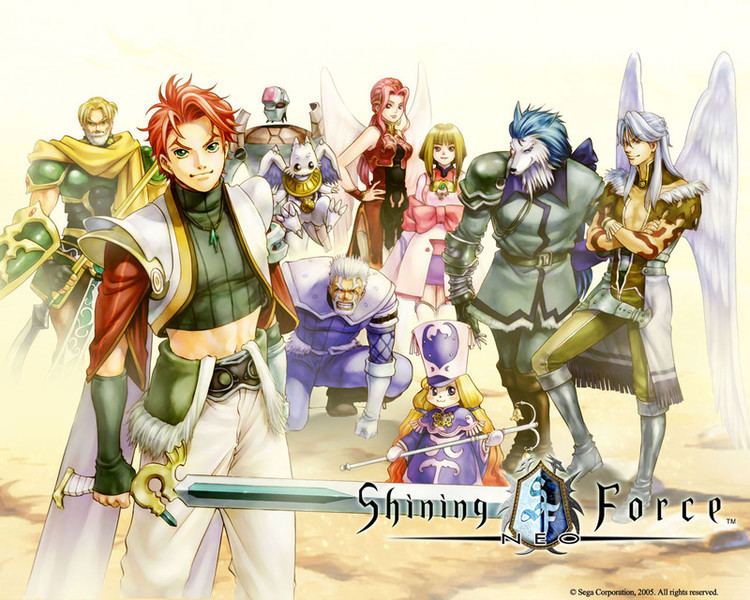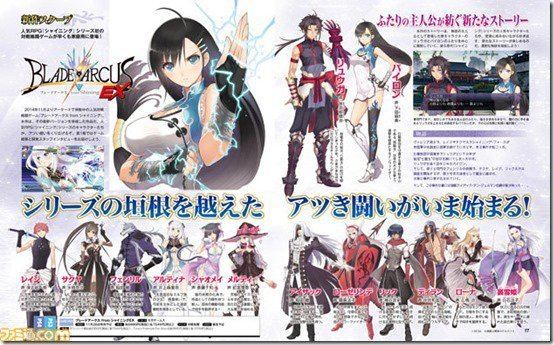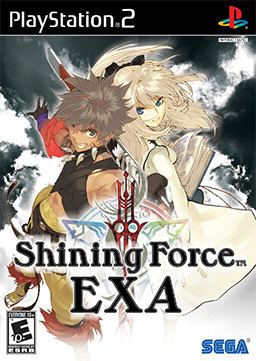Genres Role playing Year of inception 1991 | Platforms various Genre Role-playing video game | |
 | ||
Developers Camelot Software Planning
Climax Entertainment
Grasshopper Manufacture
Nextech
Amusement Vision
Neverland
Flight-Plan
Studio Saizensen
Media.Vision First release Shining in the Darkness
1991 (1991) Publishers Sega, Atlus USA, Infogrames Entertainment SA, THQ Games Blade Arcus from Shining EX, Shining Ark, Shining Blade, Shining Hearts, Shining Force Feather | ||
Shining (シャイニング, Shainingu) is a series of fantasy console games developed by Sega. The series can be thought of as Sega's main venture into the RPG genre, along with the sci-fi RPG series, Phantasy Star. The first game, Shining in the Darkness, was a first-person dungeon crawler with randomly encountered, turn-based battles (comparable to Wizardry and Might and Magic). The next game released in the series was Shining Force, which were turn-based strategy style tactical role-playing games with battle scenes acted out with sprites (comparable to the Kure Software Koubou games and Fire Emblem). Other spin-offs include Shining Soul, a dungeon crawl action role-playing game with roguelike elements.
Contents
- Sega s shining franchise turns 25 years old
- Dungeon crawler titles
- Strategy titles
- Action RPG titles
- Connections between games
- Games
- References

Sega s shining franchise turns 25 years old
Dungeon crawler titles

In the dungeon crawler titles of the series (Shining in the Darkness and Shining the Holy Ark), the player takes control of an adventuring party. Battles work very similarly to those of Dragon Quest, Mother, and the fellow Sega RPG series Phantasy Star, in that they are first person and the player is placed in a position where the hero and team mates would be. Shining in the Darkness is the first game in the Shining series, and is a very simple labyrinth exploration game, with a simplified non explorable town and world map, where choices are made through a cursor system. Shining the Holy Ark was released immediately prior to Shining Force III, and while it is also a dungeon crawler, it features a far more expanded gameplay world over the first title.
Strategy titles

For the strategy games of the series (Shining Force, Shining Force Gaiden, Shining Force Gaiden 2, Shining Force II, Shining Force Gaiden: Final Conflict, Shining Force CD, Shining Force III and Shining Force Feather), the player takes charge of a party in large-scale, strategic battles. The games generally limit the number of characters who can enter any one battle at a time to about a dozen. The player is only in control of unique troops; there are no generic footmen, archers, or cavalry.
Action RPG titles

The third broad category of Shining games is the "action RPG" set of titles. This incorporates: Shining Wisdom, Shining Soul, Shining Soul II, Shining Force Neo, Shining Tears, Shining Force EXA and Shining Wind. This category is essentially a dumping ground for any Shining game which does not use turn-based combat; the games it incorporates do not necessarily have any noticeable similarity in gameplay. For instance, while Shining Tears uses similar mechanics to Shining Soul II, it has less in common with Shining Wisdom than it does with any of the strategy RPG titles of the series.

On December 3, 2009, Shining Force Cross was released as an arcade game for Sega's RingEdge system board. It is a multiplayer role-playing game with support for up to eight players, both online and offline. Within one month, nearly 2,400 Shining Force Cross machines had been sold to arcade operators by December 31, 2009. A sequel has been released for the RingEdge arcade system in 2012, Shining Force Cross Illusion.
Connections between games
Each game in the series has a standalone story, meaning that it is not required to play its predecessors to better understand its storyline. Nevertheless, most installments of the series prior to Shining Soul I often they reference each other or have characters carried over. For example, in Shining Wisdom, the elf-cleric Sarah and elf-mage Kazin from Shining Force II make an important appearance. Shining Force Gaiden: Final Conflict and Shining Force II are two of the most related games, having the largest number of characters and locations in common.
From Shining Soul I onward, installments of the series tend to have less significant connections. For instance, in Shining Tears a character mentions the Klantol Kingdom (the setting for Shining Soul II) and tells its geographic location, but there is no interaction with any of the characters or plot events of Shining Soul II. However, Shining Wind and Shining Tears are some of the most closely connected pair of games in the series, since the former is a direct sequel to the latter and features return appearances by nearly all of the major characters.
Games
This is a full list of Shining games:
